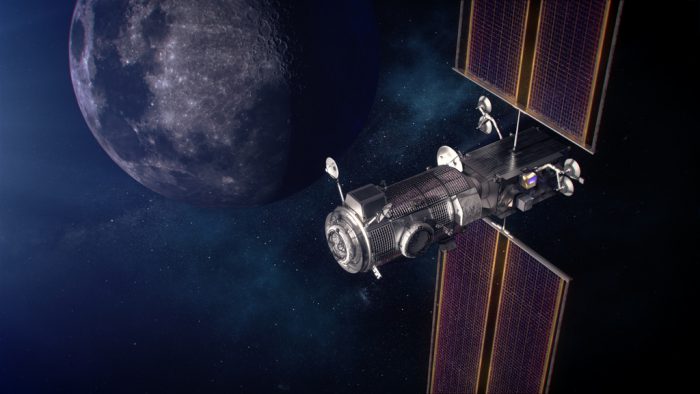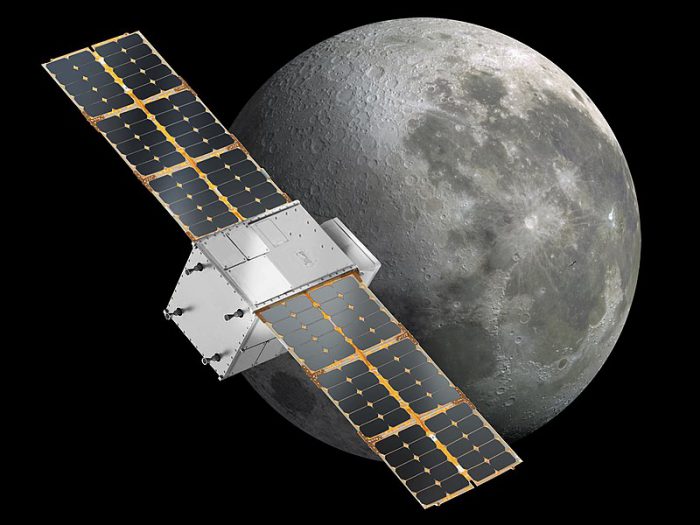Right now, there is a small spacecraft the size of a waste basket that is flying toward the Moon.
Called CAPSTONE, it is one of the first steps in NASA’s massive new lunar program, Artemis. This program is set to bring humans back to the Moon so that we can set up permanent bases there.
Since being launched on June 28, CAPSTONE has been making its slow, gentle journey to our nearest neighbour. When it finally enters lunar orbit—so far slated for November 13—it will begin gathering information that will lead to humans having a space station around the Moon. So neat!
How will CAPSTONE help achieve this? Let’s dig in.
Long name, big mission
CAPSTONE stands for *deep breath* Cislunar Autonomous Positioning System Technology Operations and Navigation Experiment. Wow.
That’s an exceptionally long name, but the clues to what it is doing out there are all over it. Essentially, CAPSTONE is a probe that is going to learn about orbiting around the Moon.
‘Autonomous’ means self-controlled, and CAPSTONE is testing out a new type of orbit to see how stable it is. This egg-shaped orbit is known as a near-rectilinear halo orbit. Check out this video to see how it will orbit the Moon, including how it will look orbiting the Moon as the Moon orbits Earth. Neat!
Building the gateway

The larger part of CAPSTONE's mission is how it will pave the path for Gateway, a future lunar space station. (NASA/Wikimedia Commons)
The information that CAPSTONE gathers as it orbits will be extremely valuable to a much larger mission that is to come. That mission is known as Gateway, or Lunar Gateway. This is a planned space station that will orbit the Moon!
It will have a human crew and like the International Space Station, will be a laboratory for investigating space. It will also be used to launch missions not only to the surface of the Moon, but also to Mars and even deeper into the solar system.
The Canadian Space Agency is one of four agencies contributing to this project. (The others are the U.S.’s NASA, Japan’s JAXA, and Europe’s ESA.) This mission is already in development and is scheduled to be launched in November 2024.
And the information that CAPSTONE gathers will be hugely important in helping it make that deadline. Go CAPSTONE, go!
 An illustration of the CAPSTONE satellite. Its foldout solar panels will help to power its instruments on its mission. (NASA/Wikimedia Commons)
An illustration of the CAPSTONE satellite. Its foldout solar panels will help to power its instruments on its mission. (NASA/Wikimedia Commons)









